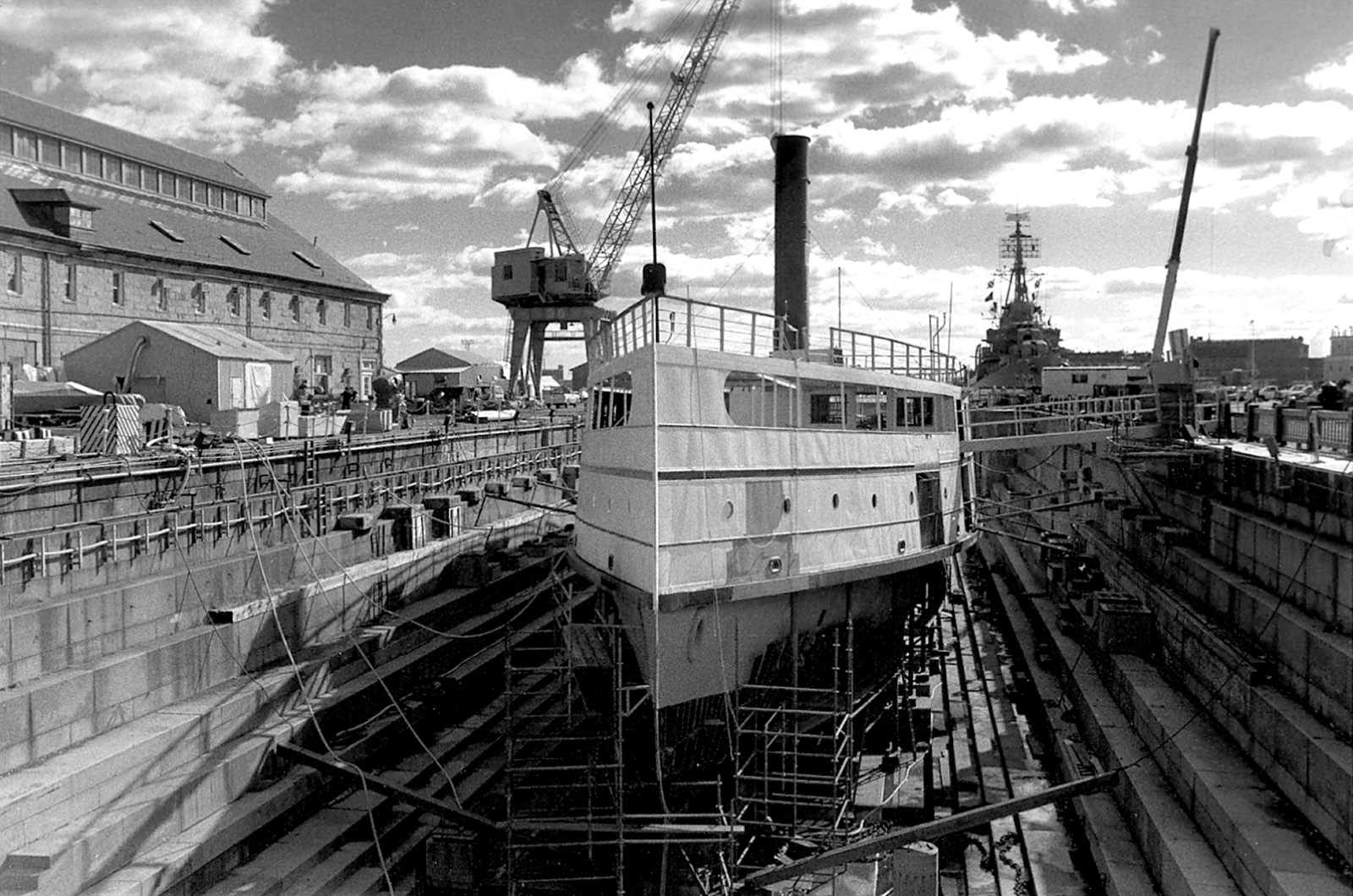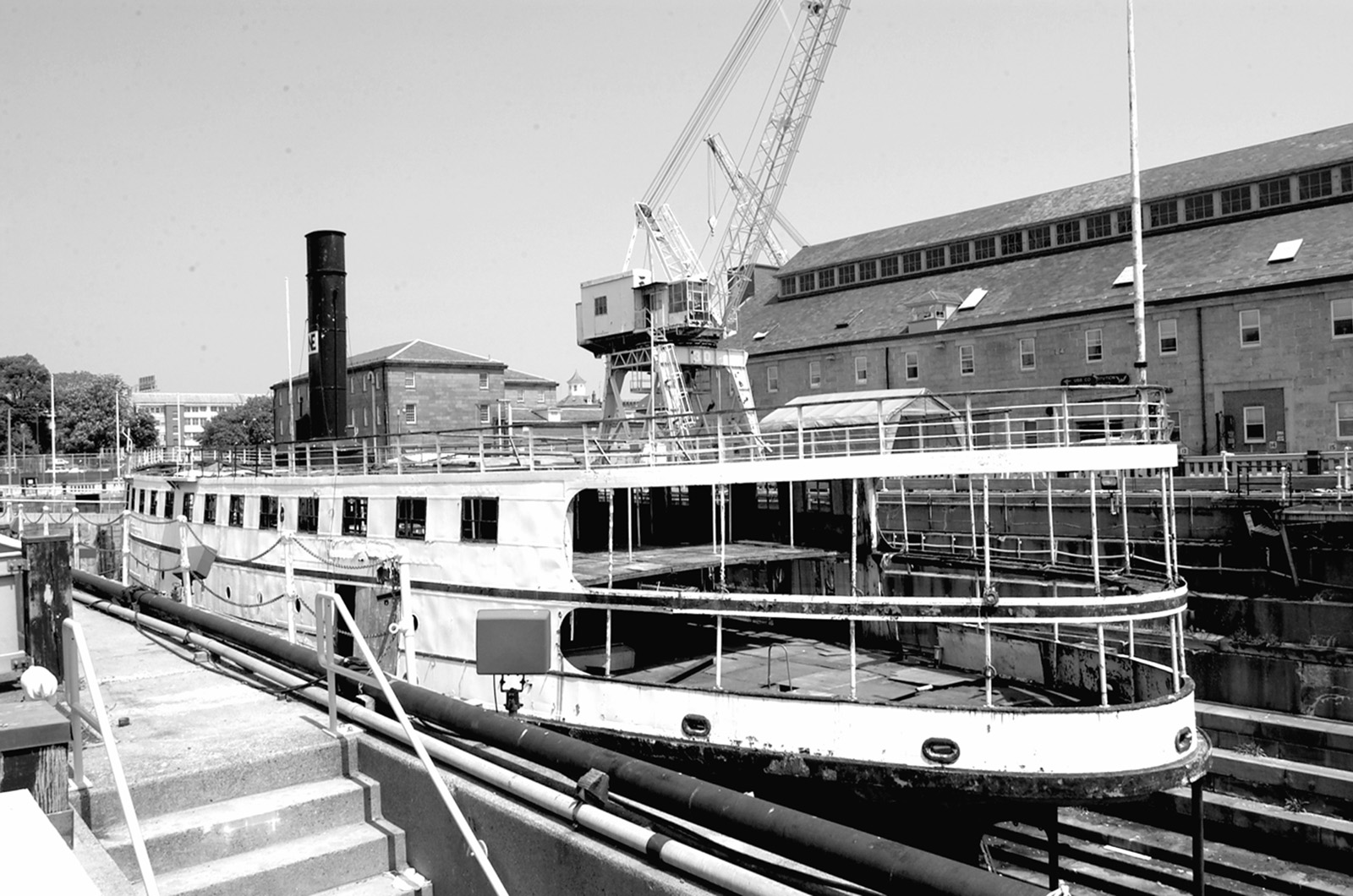Dismantled in 2006, the historic steamship Nobska will never sail again. But her engine — identical to the Titanic’s, in all but size — has found a new home on dry land.
The New England Wireless and Steam Museum, in East Greenwich, R.I., plans to restore the 1925 engine to running order for public demonstrations, museum director Randy Snow told the Gazette last week. The effort is one in a long-running push to preserve all or at least some of the beloved ferry, which plied the region’s waters for about 50 years.
“The Nobska is such a well-known and much-loved, historic piece of the coastal Rhode Island and Massachusetts story,” Mr. Snow said.
The museum expects to acquire the engine, which is currently in pieces in Fall River, within the next month, he said.
Getting it back to working order could take as much as two years of work by skilled museum volunteers, Mr. Snow said.
If that estimate holds, the four-cylinder triple-expansion steam engine may be thrumming again just about 100 years after making its debut.
Built at Bath Iron Works in Maine, the Nobska served the Vineyard, Nantucket, New Bedford and other regional ports for privately-owned ferry companies from 1925 until 1948, when the Steamship Authority was created by the state legislature.
The 210-foot ferry, with its pointed bow and side entrance for vehicles, would continue on the Martha’s Vineyard and Nantucket routes for another quarter-century, attaining the status of an icon as end-loading diesel ferries replaced its sister steamers.
“As a very young person I remember the ship, and my mom loved it and my dad grew up all his life riding it — He tried to come to Nantucket at least once a year, even if it was just to turn around and leave,” Nantucket resident Mary Longacre told the Gazette last week.
While two other Island steamships were commandeered by the federal government for use in World War II, the Nobska’s hero turn came in 1961, when her sharp bow enabled the vessel to break through heavy ice in Nantucket’s harbor and deliver supplies to stranded islanders.
“We had a family love of that ship in particular, and the Steamship Authority in general,” Ms. Longacre recalled.
That’s why she is now working with Mr. Snow and other museum executives to find homes for the ferry’s remaining parts, after the businessman who was storing them died earlier this year, Ms. Longacre told the Gazette.
“I knew they existed, and somebody was going to have to make sure they continued to exist,” she said.
The Nobska’s decommissioning in 1973 touched off a long, troubled and ultimately fruitless campaign to preserve the ferry.
Sold off by the Steamship Authority in 1975, the Nobska was stripped of her furnishings to become a floating restaurant in Baltimore.
The eatery failed within a few years, but it was not until the late 1980s that a now-defunct nonprofit — founded in 1975 by ferry fans and former Nobska crewmembers — was able to bring the derelict vessel back to New England.
A steamer without a home port, maintained by a skeleton crew of volunteers, the Nobska tied up in Fall River, Providence and New Bedford over the next few years before winding up in 1995 drydocked at the Charlestown Navy Yard, which would prove to be her final berth.
The New England Steamship Foundation, originally the Friends of Nobska, continued working to save the ship with money from government grants and private donations — but apparently chose the wrong fund-raising agent, who kept the donations instead of passing them on to the foundation.
Meanwhile, the one-year agreement with the Charlestown Navy Yard stretched by more than a decade before the Nobska was given her final eviction notice in 2006.
Even then, the foundation held out hope that the ferry could still be floated out.
“We’re not giving up yet. We still have some time left to preserve a vital part of nautical history,” foundation president Warren Hartwell told the Gazette in May, 2006.
But the National Park Service, which controls the navy yard, had already notified the foundation in 2004 that the dry dock would soon be needed for work on the 18th-century USS Constitution (Old Ironsides) and the World War II destroyer USS Cassin Young.
By 2006, the park service was no longer willing to wait and the funds Mr. Hartwell was hoping for proved insufficient to save the Nobska, which was dismantled that summer.
Mr. Hartwell’s manufacturing business in Fall River became the repository for the ferry’s remaining parts, including funnels and three lifeboats.
The engine also came to Mr. Hartwell’s warehouse, after a mid-1990s sojourn at the Greater New Bedford Regional-Vocational Technical High School.
Working with a former Nobska chief engineer, the students refurbished one lifeboat and intended to restore the engine as part of the foundation’s plan to float the ferry under her own steam.
But they got no farther than removing the protective grease, Mr. Snow told the Gazette this week — so the engine parts are now covered in rust that will need to be removed before reassembly can begin, he said.
“It needs quite a bit more work than it would have otherwise,” he said.
Mr. Hartwell, who had many Martha’s Vineyard ties, died in May of this year, leading Ms. Longacre to contact his family and offer to help with the Nobska relics that are scattered across the manufacturing company’s grounds and stacked up in its warehouse.
“I said I would be happy to volunteer to do some of the legwork to find appropriate homes for these artifacts,” she told the Gazette. “Warren was very devoted to their preservation.”
The Nobska’s more charismatic fixtures, such as the ship’s wheel, compass binnacle and engine telegraph, were easy to place, she said.
The three lifeboats are a bit trickier, Ms. Longacre said: They’re 30 feet long, only one has been restored and they date from the Nobska’s 1950 refit, making them less historically valuable.
But the real challenge was placing the engine before Mr. Hartwell’s family needed the warehouse space.
“That was the biggest question mark, was whether those heavy engine parts would find a home,” Ms. Longacre said.
Once the New England Wireless and Steam Museum has restored the Nobska engine to working order, it will join a collection of steam engines, many from New England mills, that operate quite differently, Mr. Snow said.
“Almost everything else that we have are just single-cylinder engines. The way that they went about trying to achieve fuel efficiency was very different,” he said.
While the Nobska is gone forever, her voice can still be heard on Vineyard and Nantucket waters: The Steamship Authority installed the old ferry whistle aboard the M/V Eagle, where it runs on air instead of steam.









Comments (6)
Comments
Comment policy »